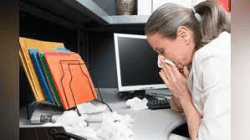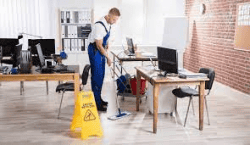A dirty workplace can lead to many health problems, including excess sick days for employees. To combat this problem, workplaces should take measures to keep surfaces clean. Some of the most frequently touched areas in a workplace include computers, phones, and break room sinks and door handles. Even a refrigerator can harbour toxic mess from food. Here are some ideas for cleaning areas of a workplace that get dirty. These include: keeping the workspace clean, following compliance posters, and removing debris on a daily basis.

A dirty workplace can contribute to sickness, low morale, and increased health risks. An average office desk has 400 times the bacteria found on a toilet seat. High-touch surfaces are notorious for spreading germs and must be cleaned regularly. In addition to causing health issues, dirty workplaces make a workplace look unprofessional and unsanitary. Clean desks, tables, chairs, and other high-touch surfaces to keep germs and bacteria to a minimum. For Office Cleaning Cheltenham, contact intocleaning
Staff should also avoid bringing smelly foods into the workspace. Even if the office is air-conditioned, the odour of food can quickly spread to other parts of the building, making it unwelcoming to visitors. Areas of a workplace that get dirty may also be soiled by large furniture. Conference tables are common examples of such furniture, as they take up a lot of space and tend to stay in one place, accumulating dirt. Despite professional cleaners’ best efforts, they may miss certain areas of a workplace that get dirty.
Keeping a clean environment at work is a vital part of employee health and happiness. A clean office promotes productivity and increases employee loyalty. Employees who are happy to walk into a healthy environment are more likely to stay and contribute to their work more meaningfully. They will be more efficient and productive if their surroundings are clean.

While restrooms are not the dirtiest areas of a workplace, many of these surfaces are the most germy areas. The average desk is about 400 times dirtier than a toilet seat. Offices are also a source of bacteria and viruses. Keeping the workplace clean will increase productivity and reduce the risk of common colds. And it’s essential to keep your workplace as clean as possible. With proper cleaning, you can improve your overall health while at work and reduce the risk of common colds and the flu.
Cleaning surfaces is important, and it’s easy to overlook areas that get dirty. Many people don’t wash their hands often, so surfaces from the elevator buttons to taps are dirty. Keeping surfaces clean will reduce sick days and increase employee satisfaction.
